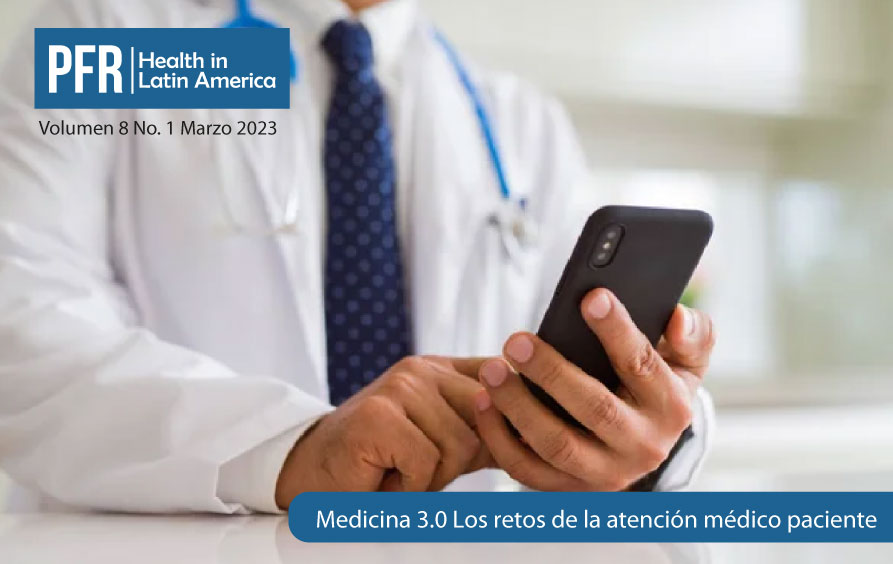Current approach in the diagnosis and treatment of heterotopic pregnancy due to spontaneous conception
DOI:
https://doi.org/10.16921/pfr.v8i1.262Keywords:
heterotopic pregnancy, trophoblast, laparotomy, adnexaAbstract
Introduction: Heterotopic pregnancy (HE) is a rare clinical condition, characterized by the concurrence of two simultaneous pregnancies in different implantation sites, including a normal intrauterine pregnancy (IUP) and an ectopic pregnancy (EP) of extrauterine location. Heterotopic pregnancy can be spontaneous or as a result of assisted reproductive technologies. Despite being rare, it is a potentially risky clinical condition in terms of maternal-fetal well-being and its incidence has been increasing due to the increase in risk factors that underlie the pathogenesis of its development and the greater number of pregnancies derived from it. the use of assisted reproductive techniques; population in which heterotopic pregnancy has a significantly higher incidence compared to spontaneous postconception patients. The present study seeks to highlight the importance of clinical suspicion of a heterotopic pregnancy based on the recognition of risk factors, and the importance of a complete clinical and ultrasound evaluation; whereas, despite identification of a normal intrauterine pregnancy by ultrasound, careful ultrasound examination of adnexal structures such as the fallopian tube, cervix, or ovary is necessary; structures that turn out to be possible sites of ectopic gestation.
Objective: To carry out a review of the literature available worldwide on spontaneous heterotopic pregnancy with an updated diagnostic and therapeutic approach, highlighting the importance of recognizing risk factors and signs suggestive of a heterotopic pregnancy, in addition to early diagnosis through complementary studies.
Materials and Methods: This article will be carried out through an analysis and systematic review through the search for scientific articles in different scientific medical databases such as PubMed, ScienceDirect, The New England Journal of Medicine, Journal of International Medical Research, Scielo, Uptodate, Scopus, Springer, Dialnet, British Medical Journal (BMJ). Literature reviews, randomized controlled trials, meta-analyses and systematic reviews published within the last 5 years in English and Spanish were included.
Results: An updated bibliographic review on heterotopic pregnancy was carried out, focused on diagnosis and management.
Conclusion: Heterotopic pregnancy is more common in patients who use assisted reproduction techniques, however, cases have also been reported in natural pregnancy, although in smaller numbers. It is necessary to have a high index of suspicion that will help for an early diagnosis and timely and effective intervention. The location of the ectopic pregnancy in a heterotopic pregnancy is usually in the fallopian tube. However, there are studies that describe heterotopic pregnancies in the cervix and ovaries. For diagnosis, transvaginal ultrasound with color Doppler is best because trophoblastic tissue has an increased flow with a decreased resistance index when it is found in the adnexa. The best management for a heterotopic pregnancy is laparotomy to resolve the extrauterine pregnancy.
Downloads
References
2. Hewlett K, Howell CM. Heterotopic pregnancy: Simultaneous viable and nonviable pregnancies. JAAPA. 2020; 33(3):35–8. Disponible en: http://dx.doi.org/10.1097/01.JAA.0000654012.56086.97
3. Harzif AK, Hyaswicaksono P, Kurniawan RH, Wiweko B. Heterotopic pregnancy: Diagnosis and pitfall in ultrasonography. Gynecol Minim Invasive Ther 2021;10(1):53–6. Disponible en: http://dx.doi.org/10.4103/GMIT.GMIT_92_19
4. Cucinella G, Gullo G, Etrusco A, Dolce E, Culmone S, Buzzaccarini G. Early diagnosis and surgical management of heterotopic pregnancy allows us to save the intrauterine pregnancy. Prz Menopauzalny. 2021;20(4):222–5. Disponible en: https://www.termedia.pl/Early-diagnosis-andsurgical-management-of-heterotopic-pregnancy-r-nallows-us-to-save-theintrauterine-pregnancy,4,45752,1,1.html
5. Ping HL, Min ZH, Bi GJ, Yue TC, Xiao HX. Management and outcome of heterotopic pregnancy. Ann Clin Lab Res. 2018;06(01). Disponible en: http://dx.doi.org/10.21767/2386-5180.1000228
6. Nabi U, Yousaf A, Ghaffar F, Sajid S, Ahmed MMH. Heterotopic pregnancy – A diagnostic challenge. Six case reports and literature review. Cureus 2019;11(11):e6080. Disponible en: http://dx.doi.org/10.7759/cureus.6080
7. Abdelazim IA, AbuFaza M, Shikanova S, Karimova B. Diagnostic criteria and treatment modalities of ectopic pregnancies: A literature review. Eur Med J Reprod Health. 2021 ;83–94. Disponible en: https://emj.emg-health.com/wp-content/uploads/sites/2/2021/08/DiagnosticCriteria-and-Treatment-Modalities-of-Ectopic-Pregnancies-A-LiteratureReview.pdf
8. Abdelmonem AH, Sayed G, Abugazia AE, Kohla S, Youssef R. Heterotopic8 pregnancy after a spontaneous conception a case report with a review of clinical, laboratory and imaging findings. Clin Case Rep. 2021;9(8):e04649. Disponible en: http://dx.doi.org/10.1002/ccr3.4649
9. Ouafidi B, Kiram H, Benaguida H, Lamrissi A, Fichtali K, Bouhya S. Diagnosis and management of a spontaneous heterotopic pregnancy: Rare case report. Int J Surg Case Rep. 2021;84(106184):106184. Disponible en: http://dx.doi.org/10.1016/j.ijscr.2021.106184
10. Aziz M, Arronte J. A case of spontaneous heterotopic pregnancy in natural conception complicated with hemoperitoneum. Heliyon. 2020;6(2):e03373. Disponible en: https://www.sciencedirect.com/science/article/pii/S2405844020302188
11. Oancea M, Ciortea R, Diculescu D, Poienar A-A, Grigore M, Lupean R-A, et al. Spontaneous heterotopic pregnancy with unaffected intrauterine pregnancy: Systematic review of clinical outcomes. Medicina (Kaunas). 2020;56(12):665. Disponible en: https://www.mdpi.com/1648-9144/56/12/665/htm
12. Černiauskaitė M, Vaigauskaitė B, Ramašauskaitė D, Šilkūnas M. Spontaneous heterotopic pregnancy: Case report and literature review. Medicina (Kaunas). 2020;56(8):365. Disponible en: http://dx.doi.org/10.3390/medicina56080365
13. Nguyen KP, Hudspeth M, Milestone H. Spontaneous heterotopic pregnancy: Diagnosis and management. Case Rep Obstet Gynecol. 2022;2022:1–4. Disponible en: https://www.hindawi.com/journals/criog/2022/2994808/
14. Koutras A, Fasoulakis Z, Diakosavvas M, Syllaios A, Pagkalos A, Samara AA, et al. Cervical twin heterotopic pregnancy: Overview of ectopic pregnancies and scanning detection algorithm. Medicina (Kaunas). 2021;57(9):969. Disponible en: http://dx.doi.org/10.3390/medicina57090969
15. Rivera C, Pomés C, Díaz V, Espinoza P, Zamboni M. Actualización del enfrentamiento y manejo de localizaciones poco frecuentes del embarazo ectópico. Rev Chil Obstet Ginecol. 2020; 85(6):709–9-9 Disponible en: https://www.scielo.cl/scielo.php?pid=S071775262020000600709&script=sci_arttext&tlng=en
16. Cobo T, Escura S, Ferrero S, Creus M, López M, Palacio M. Protocolo: Gestación ectópica tubárica y no tubárica. Medicina Fetal y Neonatal de Barcelona. 2018. Disponible en: https://medicinafetalbarcelona.org/protocolos/es/patologia-maternaobstetrica/gestaci%C3%B3n%20ect%C3%B3pica.pdf
17. Arrocha G, Espinosa J. Embarazo heterotópico y Supervivencia del producto intrauterino. Reporte de un Caso y Revisión de la Literatura: La información cruda anonimizada será enviado junto con el manuscrito. Revista Centroamericana de Obstetricia y Ginecología. REVCOG. 2021 ;12–7. Disponible en: http://dx.doi.org/10.37980/im.journal.revcog.20211781
18. Carpio Guzmán LA. Criterios ultrasonográficos del embarazo ectópico. Investigación Materno Perinatal. Instituto Nacional Materno Perinatal. Lima, Perú. 2021;10(3):65–75. Disponible en: http://dx.doi.org/10.33421/inmp.2021242






